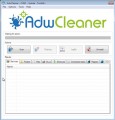The HTML:Script-inf alerts that shows your antivirus should not be underestimated, because the reason for their appearance is penetration an adware (also known as ‘ad-supported’ software) into your system. It can bring a security risk to your machine. So, do not ignore it! The HTML:Script-inf adware is created to display intrusive and unwanted ads, even without your permission and desire to see it. The annoying advertisements can be just the beginning, because your PC is hijacked by dangerous software, so the amount of popup ads in the future may increase. Its appearance will prevent you normally browse the sites, and more, can lead to crash the web browser.
While your machine is infected with the HTML:Script-inf virus, the Chrome, Firefox, Internet Explorer and MS Edge may be rerouted to unwanted web pages. Of course, the adware may not cause damages to your files or Windows system, but it may display lots of unwanted ads. These ads will be injected within the content of web-sites that are you opening in your browser and can be varied: pop-up ads, in-text ads, different sized banners, offers to install an questionable software. The ads will appear on all web sites, including web-sites where previously you have never seen any ads.
The malicious applications from the ad-supported software family that alters the settings of browsers usually affects only the Chrome, Firefox, Edge and Microsoft Internet Explorer. However, possible situations, when any other web browsers will be affected too. The adware may change the Target property of a web browser’s shortcut, so every time you start the internet browser, instead of your homepage, you will see an annoying ad page.
We recommend to remove HTML:Script-inf virus, which redirects your internet browser onto annoying web pages, as soon as you found this problem, as it can direct you to web-resources which may load other dangerous software on your computer.
How to remove HTML:Script-inf virus
In many cases HTML:Script-inf virus requires more than a simple uninstall with the help of Microsoft Windows Control panel in order to be fully removed. For that reason, our team created several removal solutions which we have summarized in a detailed guidance. Therefore, if your antivirus detects HTML:Script-inf virus threat on your computer and you are currently trying to have it removed then feel free to follow the few simple steps below in order to resolve your problem. Some of the steps will require you to restart your machine or close the page. So, read this instructions carefully, then bookmark or print it for later reference.
- Remove suspicious and unknown software by using Windows Control Panel
- Disinfect the browser’s shortcuts
- Remove unwanted Scheduled Tasks
- Remove HTML:Script-inf with Zemana Anti-malware
- Run Malwarebytes to delete HTML:Script-inf virus
- Remove HTML:Script-inf virus and malicious extensions with AdwCleaner
Remove suspicious and unknown software by using Windows Control Panel
It’s of primary importance to first identify and delete all PUPs, ad supported software applications and hijacker infections through ‘Add/Remove Programs’ (Windows XP) or ‘Uninstall a program’ (Windows 10, 8, 7) section of your Windows Control Panel.
Windows 10, 8.1, 8
Click the MS Windows logo, and then click Search ![]() . Type ‘Control panel’and press Enter as shown on the screen below.
. Type ‘Control panel’and press Enter as shown on the screen below.
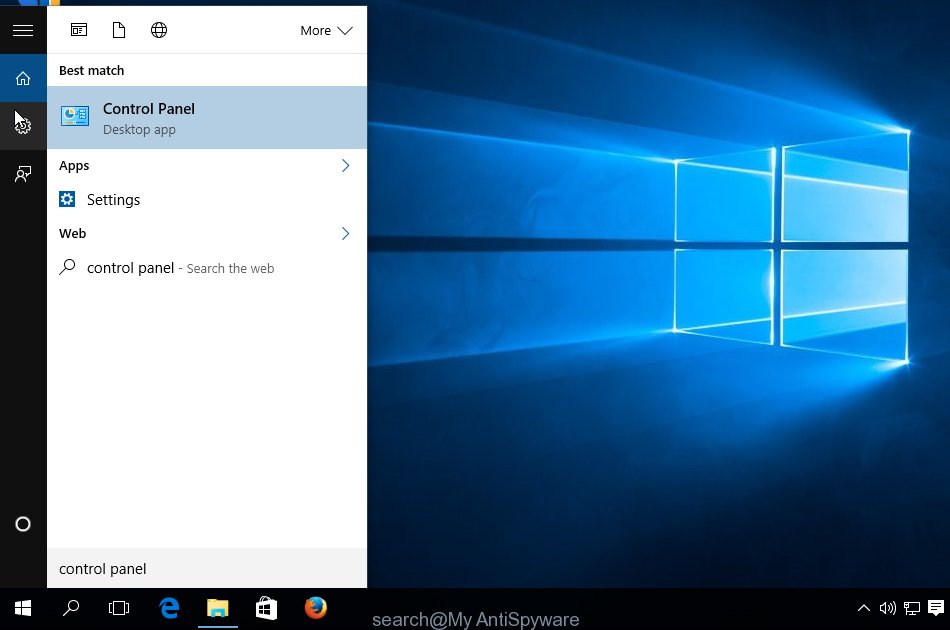
Once the ‘Control Panel’ opens, click the ‘Uninstall a program’ link under Programs category as shown in the figure below.
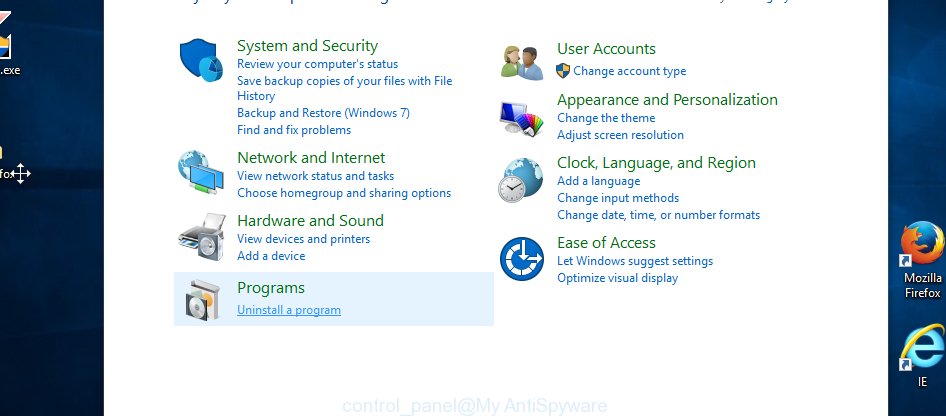
Windows 7, Vista, XP
Open Start menu and choose the ‘Control Panel’ at right as shown on the image below.
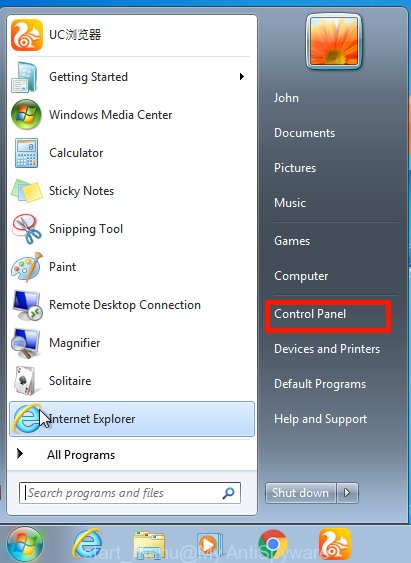
Then go to ‘Add/Remove Programs’ or ‘Uninstall a program’ (Windows 7 or Vista) as on the image below.
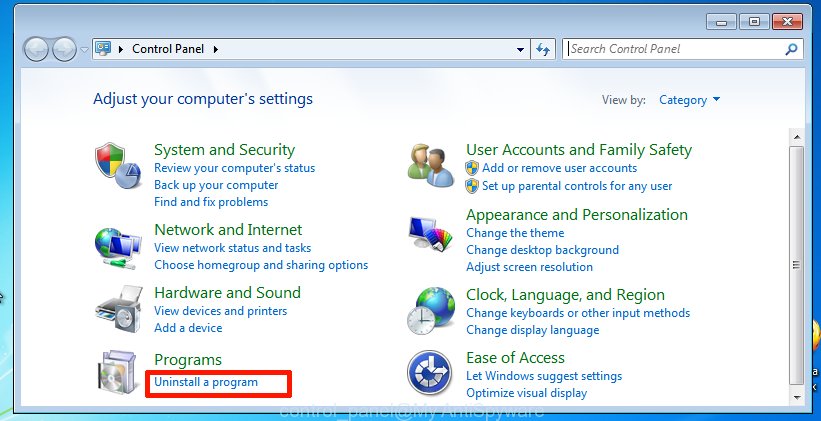
Carefully browse through the list of installed programs and get rid of all suspicious and unknown software. We suggest to press ‘Installed programs’ and even sorts all installed programs by date. When you have found anything suspicious that may be the hijacker, adware or potentially unwanted applications, then choose this application and click ‘Uninstall’ in the upper part of the window. If the suspicious program blocked from removal, then use Revo Uninstaller Freeware to fully get rid of it from your PC.
Disinfect the browser’s shortcuts
Once the adware is started, it can also alter the web-browser’s shortcuts, adding an argument such as “http://site.address” into the Target field. Due to this, every time you run the internet browser, it will be rerouted to unwanted advertisements.
To clear the web browser shortcut, right-click to it and select Properties. On the Shortcut tab, locate the Target field. Click inside, you will see a vertical line – arrow pointer, move it (using -> arrow key on your keyboard) to the right as possible. You will see a text which begins with “http://” which has been added here. You need to remove it.
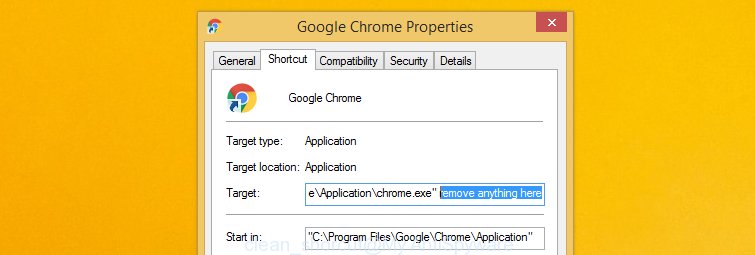
When the argument is removed, press the OK button. You need to clean all shortcuts of all your web browsers, as they may be infected too.
Remove unwanted Scheduled Tasks
If an unwanted web-site opens automatically on Windows startup or at equal time intervals, then you need to check the Task Scheduler Library and remove all the tasks that have been created by adware.
Press Windows and R keys on the keyboard simultaneously. This opens a prompt that titled with Run. In the text field, type “taskschd.msc” (without the quotes) and click OK. Task Scheduler window opens. In the left-hand side, click “Task Scheduler Library”, as shown in the figure below.
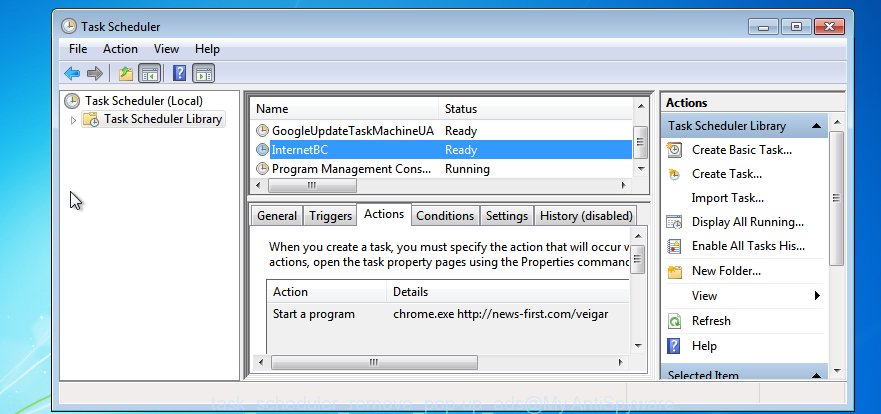
Task scheduler
In the middle part you will see a list of installed tasks. Select the first task, its properties will be show just below automatically. Next, click the Actions tab. Pay attention to that it launches on your system. Found something like “explorer.exe http://site.address” or “chrome.exe http://site.address”, then you need delete it. If you are not sure that executes the task, check it through a search engine. If it is a component of the adware, then this task also should be removed.
Having defined the task that you want to remove, then press on it with the right mouse button and select Delete as on the image below.

Delete a task
Repeat this step, if you have found a few tasks that have been created by adware. Once is complete, close the Task Scheduler window.
Remove HTML:Script-inf with Zemana Anti-malware
We recommend you to use the Zemana Anti-malware that are completely clean your PC. Moreover, the tool will help you to delete potentially unwanted software, malicious software, toolbars and ad supported software that your computer can be infected too.
Download Zemana antimalware on your computer from the link below. Save it on your desktop.
165082 downloads
Author: Zemana Ltd
Category: Security tools
Update: July 16, 2019
Once the download is finished, close all windows on your computer. Further, run the file named Zemana.AntiMalware.Setup. If the “User Account Control” prompt pops up as shown on the screen below, click the “Yes” button.
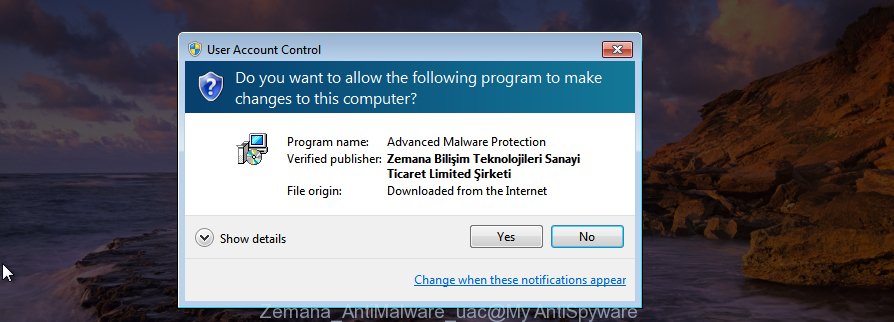
It will show the “Setup wizard” that will help you install Zemana anti malware on the computer. Follow the prompts and do not make any changes to default settings.

Once installation is done successfully, Zemana antimalware will automatically run and you can see its main window as shown on the screen below.

Next, click the “Scan” button to start scanning your PC system for the HTML:Script-inf virus and other malware and adware. A scan can take anywhere from 10 to 30 minutes, depending on the count of files on your machine and the speed of your PC. While the utility is scanning, you may see how many objects it has identified as being infected by malicious software.

When it completes the scan, it will show a screen that contains a list of malware that has been found. In order to delete all items, simply press “Next” button.

The Zemana anti-malware will begin removing HTML:Script-inf adware and other security threats. Once disinfection is finished, you can be prompted to restart your system.
Run Malwarebytes to delete HTML:Script-inf virus
We suggest using the Malwarebytes Free. You can download and install Malwarebytes to scan for and remove HTML:Script-inf from your PC system. When installed and updated, the free malware remover will automatically scan and detect all threats present on the computer.
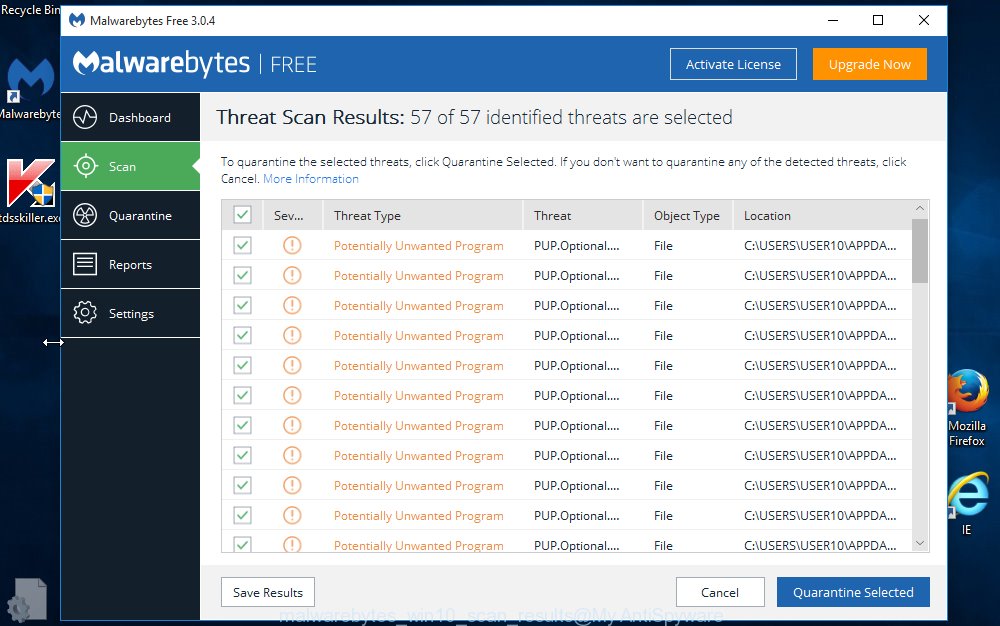
Download Malwarebytes Free by clicking on the link below.
327301 downloads
Author: Malwarebytes
Category: Security tools
Update: April 15, 2020
Once the downloading process is done, run it and follow the prompts. Once installed, the Malwarebytes will try to update itself and when this process is done, click the “Scan Now” button to begin checking your computer for the HTML:Script-inf virus and internet browser’s malicious extensions. This task may take quite a while, so please be patient. In order to get rid of all threats, simply press “Quarantine Selected” button.
The Malwarebytes is a free program that you can use to remove all detected folders, files, services, registry entries and so on. To learn more about this malware removal utility, we recommend you to read and follow the few simple steps or the video guide below.
Remove HTML:Script-inf virus and malicious extensions with AdwCleaner
If MalwareBytes anti-malware or Zemana anti-malware cannot remove this HTML:Script-inf, then we suggests to use the AdwCleaner. AdwCleaner is a free removal utility for browser hijackers, ‘ad supported’ software, potentially unwanted applications and toolbars.
Download AdwCleaner utility from the link below. Save it to your Desktop so that you can access the file easily.
225644 downloads
Version: 8.4.1
Author: Xplode, MalwareBytes
Category: Security tools
Update: October 5, 2024
Once the download is done, open the folder in which you saved it and double-click the AdwCleaner icon. It will launch the AdwCleaner tool and you will see a screen as shown below. If the User Account Control prompt will ask you want to display the program, click Yes button to continue.
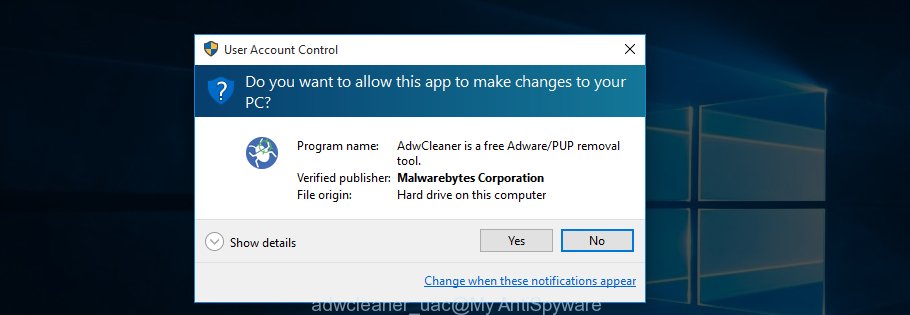
Next, press “Scan” to perform a system scan with this tool for the HTML:Script-inf and web browser’s malicious extensions. This task can take some time, so please be patient.
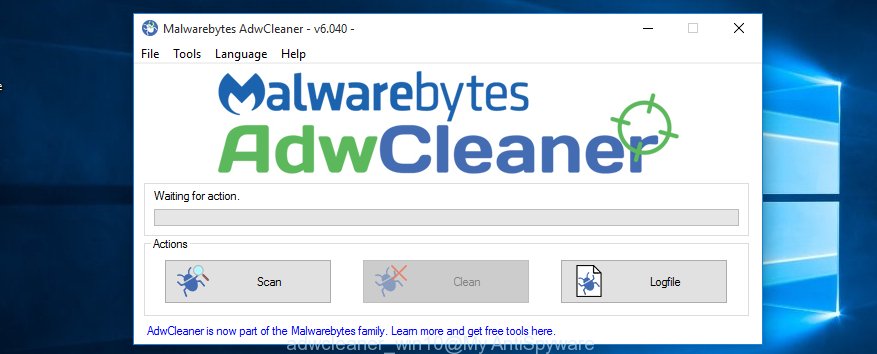
As the scanning ends is finished, it’ll display you the results as shown on the screen below.
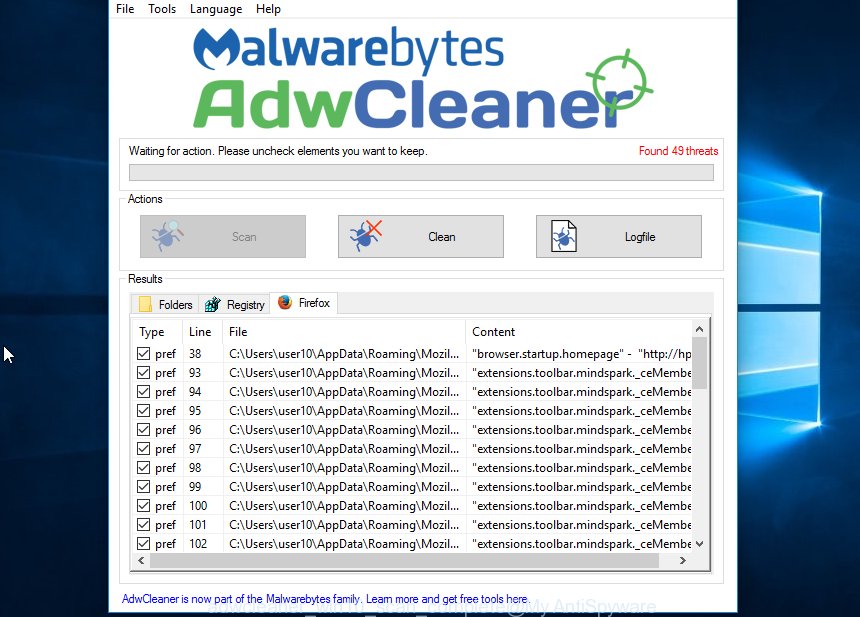
Next, you need to press “Clean” button. It will open a dialog box. Click “OK” to start the cleaning procedure. When the cleaning process is done, the AdwCleaner may ask you to reboot your PC system. After reboot, the AdwCleaner will show the log file.
All the above steps are shown in detail in the following video instructions.
Block unwanted sites and other undesired web pages
Using an adblocker application like AdGuard is an effective way to alleviate the risks. Additionally, adblocker applications will also protect you from dangerous advertisements and web pages, and, of course, block redirection chain to unwanted web-pages.
Download AdGuard application by clicking on the following link.
26908 downloads
Version: 6.4
Author: © Adguard
Category: Security tools
Update: November 15, 2018
Once the downloading process is complete, run the downloaded file. You will see the “Setup Wizard” screen as on the image below.

Follow the prompts. Once the installation is finished, you will see a window as shown below.

You can press “Skip” to close the installation application and use the default settings, or press “Get Started” button to see an quick tutorial that will allow you get to know AdGuard better.
In most cases, the default settings are enough and you do not need to change anything. Each time, when you run your system, AdGuard will launch automatically and stop pop up ads, as well as other malicious or misleading pages. For an overview of all the features of the application, or to change its settings you can simply double-click on the AdGuard icon, that is located on your desktop.
How did HTML:Script-inf virus get on your personal computer
In many cases, the free applications installer includes the optional adware or PUPs like this HTML:Script-inf virus. So, be very careful when you agree to install anything. The best way – is to select a Custom, Advanced or Manual setup mode. Here disable (uncheck) all third-party programs in which you are unsure or that causes even a slightest suspicion. The main thing you should remember, you do not need to install the optional software which you do not trust!
Finish words
Once you have finished the step-by-step guide above, your computer should be clean from HTML:Script-inf virus and other malware and adware. The Chrome, Firefox, IE and Microsoft Edge will no longer open annoying pop-up ads or redirect you to unwanted web-pages. Unfortunately, if the step-by-step instructions does not help you, then you have caught a new type of ad-supported software, and then the best way – ask for help in our Spyware/Malware removal forum.

